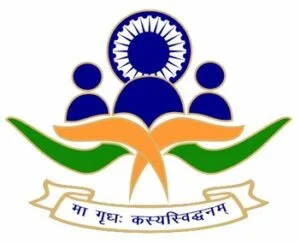
Why in news?
Recently, the esteemed former Supreme Court justice, Ajay Manikrao Khanwilkar, assumed the prestigious position of chairperson within the Lokpal institution. This appointment marks a significant milestone in the ongoing efforts to uphold integrity and combat corruption at the highest levels of governance.
What is Lokpal?
- India has an anti-corruption Ombudsman body called Lokpal.
- It was set up to look into and handle accusations of corruption made against ministers, public employees, and members of the legislature.
- After years of calls for the creation of such an organization to combat corruption at the highest levels of government, the Lokpal Act was finally passed in 2013.
- This is an autonomous organization entrusted with maintaining accountability and openness in government operations and battling high-level corruption.
What does the organizational structure ?
The Lokpal’s organizational structure is made up of a number of parts designed to guarantee that it fights corruption at the highest levels of Indian government in an efficient manner. This is a summary of its organization:
1. Chairperson: In charge of directing and overseeing the institution’s operations, the Chairperson of Lokpal is usually a retired Chief Justice of India or a former member of the Supreme Court.
2. Members: The Lokpal is made up of additional members, both judicial and non-judicial, who support the chairperson in discharging the institution’s obligations.
3. The Investigation Wing is in charge of looking into allegations of corruption made against elected officials and other government workers, as well as other public figures.
4. Prosecution Wing: Based on the results of investigations, the prosecution wing of Lokpal is in charge of bringing legal action against those found guilty of corruption.
5. Administrative Wing: This wing is in charge of general administration, finance, human resources, and other administrative and logistical facets of Lokpal’s operations.
6. Advisory and Support Staff: To help with its daily operations, Lokpal may also employ legal professionals, investigators, analysts, and administrative staff as advisory and support staff.
The overall goal of Lokpal’s organizational structure is to guarantee impartiality, openness, and effectiveness while handling claims of corruption and encouraging responsibility within the Indian government.
How are members appointed?
- The Lokpal and Lokayuktas Act, 2013 specifies the procedure for appointing members. Members are appointed in this manner:
- Selection Committee: To suggest individuals for appointment as members and chairperson, a Selection Committee was established. The members of this committee are as follows:
- The Indian Prime Minister, who serves as the Committee’s chair.
The Speaker of the House of Commons - The Lok Sabha’s Leader of Opposition
- The Indian Chief Justice or a judge already sitting on the Supreme Court whom the Chief Justice designates
- The Indian Prime Minister, who serves as the Committee’s chair.
- Search Committee: The Selection Committee may form a Search Committee prior to endorsing candidates for appointment. Finding qualified applicants for the chairman and member seats is aided by this committee.
- Nomination and Appointment: Based on the recommendations of the Selection Committee, the President of India appoints the chairperson and members.
- The appointment process aims to ensure transparency, impartiality, and the selection of qualified individuals with integrity to serve, the apex anti-corruption institution in India.
Video Credit: Republic world
People also ask
Q1: Who participates in the anti-corruption institution’s membership appointment process?
Ans: The Indian Prime Minister, Speaker of the House of Commons, Leader of the Opposition in the Lok Sabha, Indian Chief Justice, or a designated Supreme Court judge make up the Selection Committee that oversees the process.
Q2: How does the Search Committee function within the appointment process?
Ans: By searching for eligible people, the Search Committee helps the Selection Committee find qualified candidates for the chairman and member posts.
Q3: Who chooses the members and chairperson based on the Selection Committee’s recommendations?
Ans: In accordance with the suggestions, the President of India selects the anti-corruption institution’s chairwoman and members.
Your article helped me a lot, is there any more related content? Thanks!
Your article helped me a lot, is there any more related content? Thanks!
I don’t think the title of your article matches the content lol. Just kidding, mainly because I had some doubts after reading the article. https://www.binance.com/zh-TC/register?ref=VDVEQ78S